Drought-Resistant Grasses
Many people enjoy a thick green lawn, but not everyone is fortunate to live in an ideal climate. The standard go-to solution for lawns is often Kentucky Bluegrass, but that's not the right choice for everyone. Don't get me wrong, there's nothing wrong with Kentucky Bluegrass. It's thick, fills in well, and looks great. But in dry climates it can be a bit of a struggle to help it reach its full potential. If you're looking for something that's more drought-tolerant, here are some alternatives to the classic Kentucky Bluegrass:
Bermuda Grass
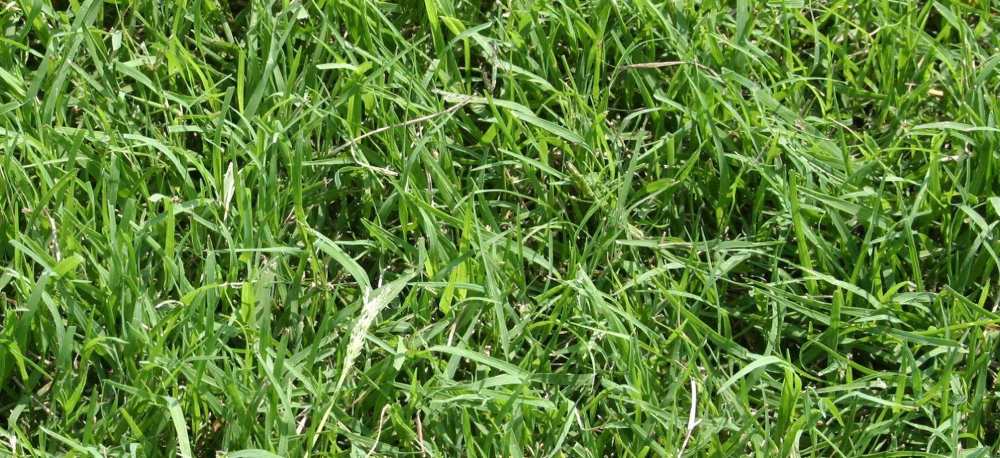
Bermuda Grass
Bermuda grass is an interesting option, mainly because its Latin name—Cynodon Dactylon—sounds more like a species of flying dinosaur.
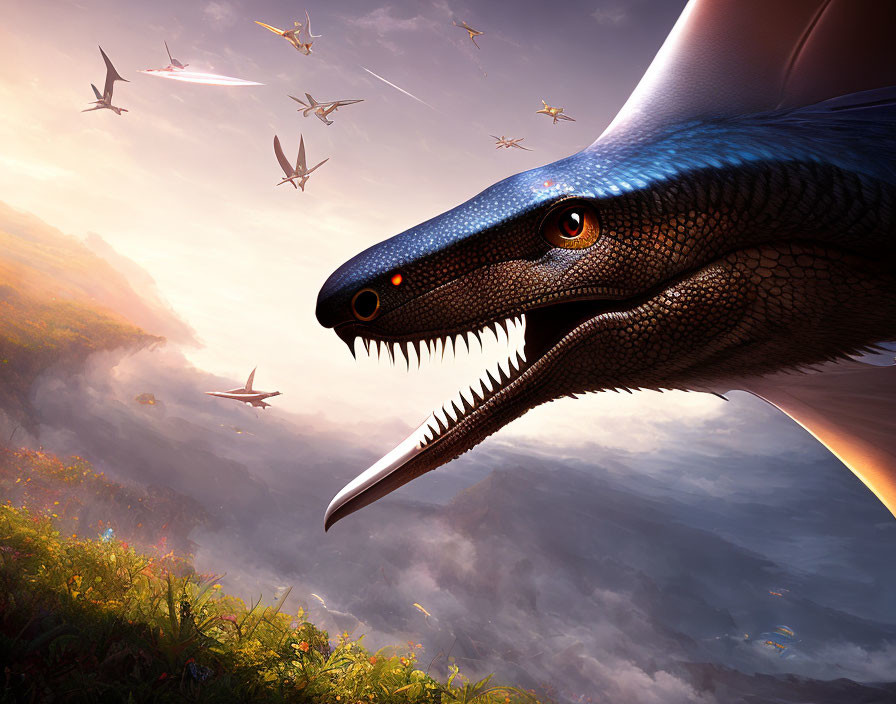
Cynodon Dactylon. (Okay, not really.)
Bermudagrass has a deep root system, allowing it to penetrate the soil more deeply. This gives it more access to water and nutrients, making it resistant to heat and drought.
It has a nice deep green to it. It is often found not only in lawns, but also on golf courses and sports fields. It can be used for erosion control on hills because of its strong and extensive roots.
One of the big advantages of bermuda grass is its quick growth. The roots can spread underground as well as above ground, so it doesn't take long to get dense coverage.
Bermuda grass is tough enough to survive in a range of different soils. It's not as sensitive to various PH levels, so it adapts well in different settings. It's also tough against bugs and diseases. It's a pretty tough grass, which brings us to the down side.
If you ever need to remove or replace Bermuda grass, good luck. Its great survival skills make it a force to be reckoned with. Once its established, those stubborn roots are very difficult to eradicate. Make sure it's really what you want before you commit.
Zoysia Grass
Zoysia grass is a fairly common option. It's also used for lawns, golf courses, and sports fields. What makes it a little different is how fine the blades are. But, despite its fine appearance, it grows quite densely. This makes for a bit of a fluffier look.
In addition to its unique appearance, it has another great perk. It doesn't grow very fast. That, of course, means less mowing for you.
Zoysia is a pretty big family of grasses. There are many different varieties, but here are some of the more popular ones:
- Meyer - This is a fine grass that you might find on the fairway of a golf course. It can handle shade well.
- Zeon - This type is unique because it's fine and fluffy. It's a great barefoot lawn option. (My personal favorite among the zoysia options.)
- Emerald - As the name implies, it's the color that sets this one apart. It's fine and fluffy, but it tends to gather a lot of thatch. Zeon might be a better option.
- Empire - This variety has a dark green color. It stands up well against cold temperatures. It's short-growing and medium bladed.
- El Toro - The blades are a little thicker than Kentucky Bluegrass.
- L1F - This is fine-bladed, and short growing. Good coverage, low maintenance.
- Palisades & Crowne - These are two different varieties, but they are both very similar in appearance. They are fairly standard in size and appearance. Comparable to bluegrass.

Zeon Zoysia, mowed vs. unmowed. So fluffy.
Buffalo Grass
Buffalo Grass is another type with a deep root system, allowing it to gather nutrients better during hard weather. Consequently, it stays green even during the very hot times. As a bonus, it's really tough against cold weather too.
One of the unique things about buffalo grass is that it doesn't need much fertilizer, if any at all. It stays strong and healthy pretty well on its own. However, that doesn't mean that it will keep its beautiful color without any help. Some basic iron supplementation will keep it in good form though.
This grass is thick. It's got a decent size blade, but it's also very dense. If you forget to mow, you will have shag carpet for a lawn. When you do mow, you'll have a beautiful green pad. It looks great, and it feels great.
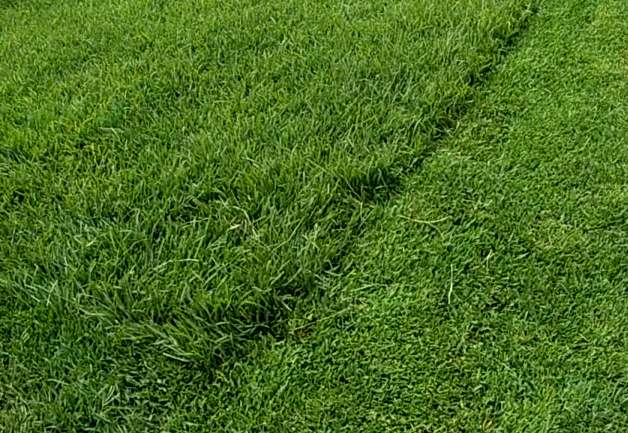
Buffalo Grass, mowed vs. unmowed. So thick.
Fine Fescue
Fine fescue is another survivor. It can tolerate heat and drought, as well as cold temperatures. It doesn't need as much water as bluegrass, because it doesn't grow very quickly.
As the name implies, it's a fine grass. It makes for a thick, yet soft appearance.
If you take care of your fine fescue, you'll have a great looking lawn.
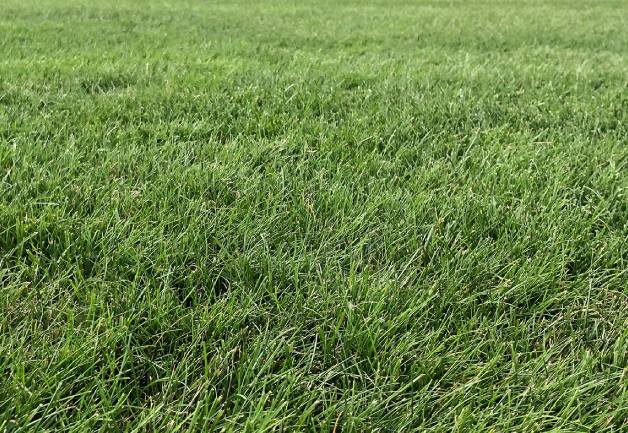
Fine Fescue
If you get a creeping red fescue, and you don't mow it, you'll get a slightly different outcome. It will look like Dr. Suess's front yard.
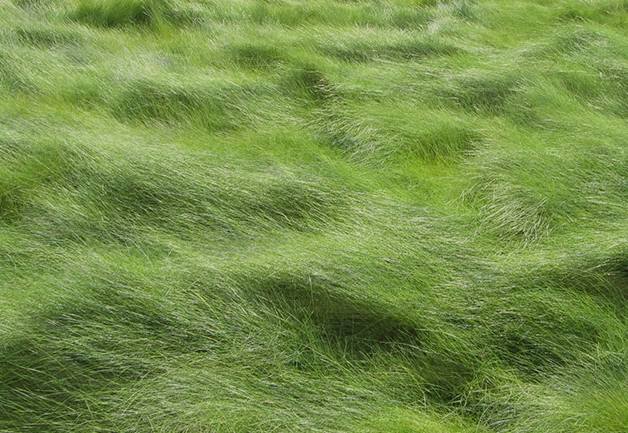
Unmowed, Creeping Red Fescue
Artificial Turf
Nothing is more drought-resistant than fake turf. It may not be your first choice, and there are some major downsides, but there may just be a place in your yard where artificial turf is the answer.
It doesn't need water. It stays green forever. You only need to occasionally hit it with a leaf blower to keep it tidy. It's very low maintenance.
On the other hand, it's expensive. It's not soft and cozy to sit on, and it gets hot. Real grass naturally converts sunlight into energy, cooling the area. Artificial turf reflects some heat and absorbs the rest for you to get burned on later. It's a great display piece, but functionally speaking, it's got some real drawbacks. It also looks pretty fake.
